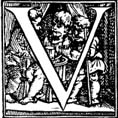
esalius’ publication was and remains a marvel. How could a busy man have achieved this work by the age of 28? It is clear that Vesalius collaborated closely with the artists who carved the woodblocks and then with the printer Oporinus; some might even call Vesalius’ supervisory style ‘hovering’ or micro-managing.
Vesalius was capable of going to great lengths to procure the human bodies he needed for his dissections, such as when he found a corpse with a friend and hid it inside his coat to sneak it home for dissection.
Dr. Vivian Nutton on the Making of a Masterpiece
Dr. Daniel H. Garrison on the Making of a Masterpiece
Legends has it that even as a child Vesalius dissected dead animals he had found near his home.
While studying in Paris, he and friends would steal into graveyards under cover of the dark and dig up corpses for dissection.
Vesalius and his friends would play a game, blindfolding each other and trying to name a particular bone by feeling it, tells Daniel H. Garrison, translator of the New Fabrica.
Moreover, Vesalius once kept a corpse in his room for an entire 15 days. “That would be considered anti-social dorm behavior,” adds Garrison with a wink.
Much as Vesalius benefited from his alliance with Charles V, the favor of other authorities was also useful. In particular, it was a judge who generously permitted Vesalius access to the cadaver of an executed criminal that the doctor could dissect.
